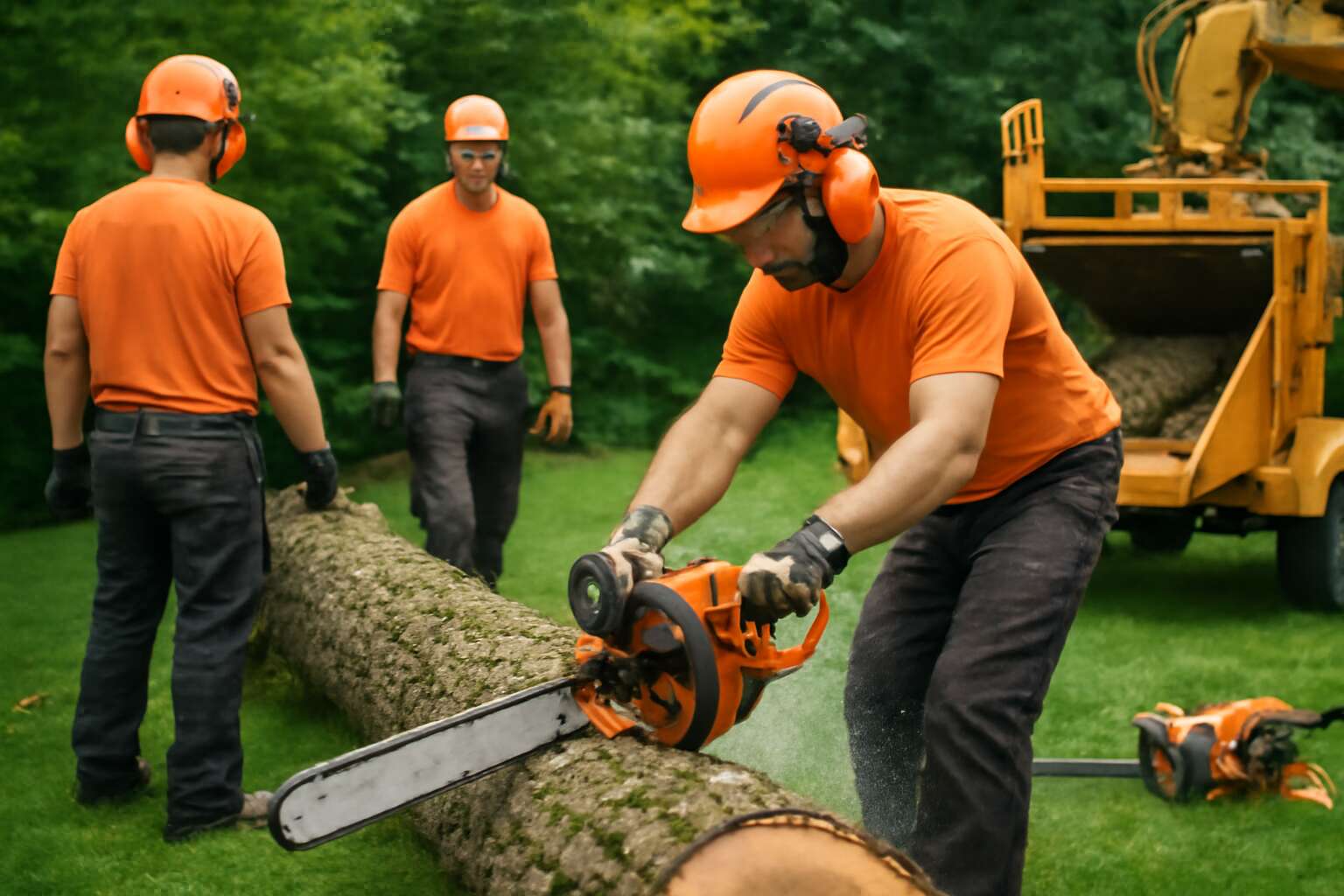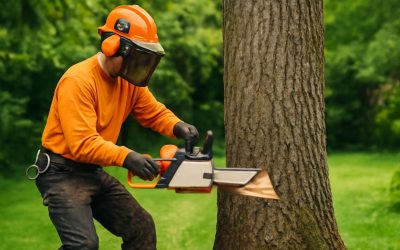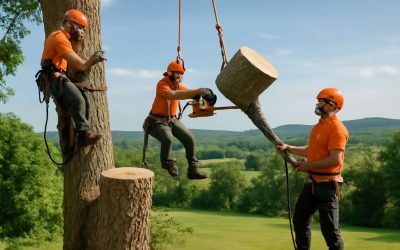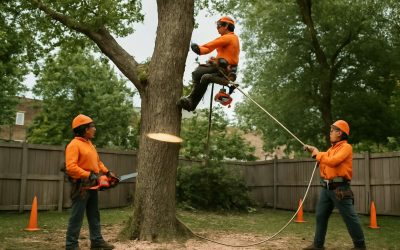Understanding Fallen Tree Removal Costs
Factors Influencing the Cost
Fallen tree removal costs can often feel like an unpredictable puzzle, with each piece influenced by a multitude of factors. In South Africa’s diverse landscape, the complexity of a fallen tree’s removal hinges on more than just its size. The terrain, accessibility, and the proximity to power lines or structures all play pivotal roles. A towering, tangled mass lodged in a tricky spot demands specialized equipment and expertise, often escalating the overall expense.
Another crucial element that influences the fallen tree removal costs is the condition of the tree itself. Decayed or partially fallen trees pose additional risks and may require delicate handling to prevent further damage or injury. It’s not merely about cutting and hauling; it’s about ensuring safety and preservation of surrounding property. Understanding these nuanced factors helps demystify the process, revealing that each removal job is uniquely tailored to its specific circumstances.
- Size and weight of the tree
- Location and accessibility
- Proximity to power lines or structures
- Condition of the tree (healthy or decayed)
Average Price Range
Understanding fallen tree removal costs can sometimes feel like navigating a maze. On average, homeowners in South Africa can expect to pay between R1,500 and R5,000 for basic removal. However, this range can skyrocket depending on the specifics of the job. Trees that are large, heavy, or situated in hard-to-reach areas tend to push costs higher due to the need for specialized equipment and additional labor.
Factors such as proximity to power lines or structures further complicate the process, often requiring extra safety measures that add to the overall expense. Additionally, the condition of the tree—whether it’s healthy or decayed—can influence the complexity of the removal. When dealing with challenging situations, the price can easily climb beyond the typical range, underscoring the importance of understanding what influences fallen tree removal costs.
Additional Expenses to Consider
Beyond the basic fee, several additional expenses can catch homeowners off guard when considering fallen tree removal costs. If the tree is close to power lines, expect to pay for specialized equipment and extra safety measures. Similarly, trees in hard-to-access areas may require more labor and careful planning, driving up the overall price. The condition of the tree also plays a role; decayed or diseased trees are more fragile and demand extra caution during removal.
To better understand potential costs, consider these factors:
- Need for crane or heavy machinery
- Specialized safety protocols
- Disposal or stump grinding services
All of these elements can significantly influence the final fallen tree removal costs. Being aware of these potential extra expenses helps in budgeting accurately and avoiding surprises when the bill arrives. It’s not just about cutting the tree down—it’s about managing the entire process safely and efficiently.
Breakdown of Fallen Tree Removal Costs
Labor Charges
Labor charges for fallen tree removal costs can make up a hefty chunk of the overall bill—sometimes accounting for nearly half of the total expense. It’s not just about wielding a chainsaw; it’s about precision, strength, and a touch of finesse to prevent further damage to your property. Skilled arborists or tree removal specialists typically charge by the hour, with rates varying depending on the complexity of the job and the size of the tree. Expect to pay a premium for larger, more hazardous trees, especially those precariously hanging over rooftops or power lines.
To give you a clearer picture, here are some common factors that influence labor charges for fallen tree removal costs:
- The size and weight of the tree
- Accessibility of the site
- Location relative to power lines or structures
- Whether equipment like cranes or bucket trucks is needed
Even with the best planning, unexpected surprises can inflate those labor charges—so it’s wise to budget a little extra. After all, when dealing with fallen trees, it’s not just about cutting costs but ensuring safety and peace of mind!
Equipment Usage Fees
When it comes to fallen tree removal costs, equipment usage fees often lurk in the shadows, quietly inflating the bill in ways many homeowners don’t anticipate. The right tools—chainsaws, cranes, bucket trucks—are the backbone of the operation, transforming chaos into order. These machines, while marvels of engineering, come with their own price tag, especially when specialized equipment is necessary to navigate treacherous terrains or delicate structures.
In certain cases, the deployment of a crane or a bucket truck becomes unavoidable, especially with towering, hazardous trees threatening rooftops or power lines. The costs associated with renting or operating such equipment can significantly sway the overall fallen tree removal costs. Here’s a glimpse into what might be involved:
- Rental fees for heavy machinery
- Fuel and maintenance costs
- Operator wages for skilled technicians
Each element plays a crucial role in the complex dance of tree removal, where precision and safety reign supreme. Remember, investing in the right equipment isn’t just about convenience—it’s about safeguarding your property and peace of mind. After all, in the realm of fallen trees, the machinery used can be as vital as the skill of the arborist wielding it. Safety, efficiency, and the inevitable costs—these are the shadows cast by the equipment usage fees that shape the landscape of fallen tree removal costs in South Africa.
Disposal and Cleanup Costs
As the remnants of a fallen titan lie sprawled across your property, the challenge of disposal and cleanup unfolds like a dark ritual. This phase, often overlooked, can stealthily drain your resources, adding an unsettling layer to the overall fallen tree removal costs. Once the tree has been felled and the debris gathered, the task shifts to clearing the site—an endeavor demanding both precision and patience.
Cleanup isn’t merely about gathering twigs and leaves; it involves chipping, hauling, and sometimes grinding massive trunk sections into mulch or firewood. The scope of this work can influence the final bill, especially when the fallen tree has intertwined with structures or power lines. To better grasp the scope, consider these elements:
- Extent of debris and volume of wood to be removed
- Need for specialized chipping or grinding machinery
- Potential removal of hazardous or contaminated material
In some cases, the fallen tree’s destruction leaves behind a haunting scar on the landscape. Clearing and disposal costs in South Africa can vary, yet they remain an essential part of the fallen tree removal costs, where the dark art of cleanup becomes a silent partner in restoring order to chaos.
Cost-Saving Tips for Fallen Tree Removal
DIY Considerations
When it comes to fallen tree removal costs, a little ingenuity can go a long way—saving you cash and sparing you from the chaos of hiring a professional for every twig. DIY options might sound appealing, but they require a hefty dose of common sense and safety precautions. After all, tackling a fallen tree isn’t a weekend project for the faint-hearted or those lacking muscle mass and experience.
To keep costs manageable, consider investing in basic tools and equipment, but don’t forget that safety gear is non-negotiable. A simple yet effective way to cut down on expenses is to assess whether you can do some of the cleanup yourself. For example, removing smaller branches and leaves can significantly reduce the amount of disposal needed, which impacts the overall fallen tree removal costs. Remember, sometimes a well-placed chainsaw and a bit of patience are all you need—just don’t forget that safety should always come first!
For those willing to get their hands dirty, here’s a quick list of DIY considerations:
- Ensure your chainsaw is sharp and in good working order
- Wear protective clothing—gloves, goggles, and sturdy boots are essential
- Check local regulations about debris disposal to avoid fines
While DIY can help save money, it’s vital to recognize your limits. Sometimes, the safest and most cost-effective route involves consulting professionals who understand the nuances of fallen tree removal costs and the potential hazards lurking in every trunk.
Hiring Qualified Professionals
When it comes to fallen tree removal costs, hiring skilled professionals often seems like an investment, but it can actually save you money in the long run. With the unpredictable nature of fallen trees—hidden hazards, unstable branches, and the potential for further damage—expertise isn’t just a luxury; it’s a necessity. A seasoned arborist or tree removal specialist can evaluate the situation swiftly, ensuring that the job is done efficiently and safely, ultimately reducing unforeseen expenses.
To make the most of your budget, consider asking your chosen service provider about bundled services or discounts for multiple jobs. Engaging a company that offers comprehensive packages can cut down on hidden fees and streamline the process. Sometimes, opting for a local professional with a reputation for transparency and reliability is worth more than the lowest quote, especially when safety and quality are on the line. Remember, the true cost of fallen tree removal isn’t just in the price—it’s in the peace of mind that comes with hiring the right experts.
Insurance and Permits
When facing the unexpected challenge of a fallen tree, understanding the nuances of insurance and permit requirements can significantly influence your overall expenses. In South Africa, many homeowners overlook the importance of verifying whether their insurance policy covers fallen tree removal costs. Sometimes, a quick call to your provider can reveal coverage for storm damage or accidental falls, saving you a substantial sum. Don’t forget to check if permits are necessary—local councils often require approval for tree removal, especially if it’s near a boundary or public space. Navigating these bureaucratic steps might seem daunting, but they can prevent costly fines or legal issues down the line.
To streamline the process and avoid hidden fees, consider asking your chosen service provider about bundled services. Many companies offer combined packages that include permits and insurance claims assistance, which can ultimately lower your total fallen tree removal costs. Remember, a little upfront inquiry can make a big difference—protecting your wallet and ensuring safe, compliant removal of the fallen tree. Sometimes, investing time in understanding these factors is just as important as the removal itself, especially when dealing with the unpredictable aftermath of a storm or natural decay.
When to Budget for Additional Services
Stump Grinding Services
When contemplating fallen tree removal costs, it’s essential to recognize that certain circumstances demand additional services beyond the basic cut and haul. Sometimes, the stormy skies leave behind more than just a fallen trunk—stump grinding services may be necessary to restore your landscape’s pristine beauty.
Budgeting for these extras isn’t just about the immediate expense; it’s about safeguarding the integrity of your property’s natural harmony. For instance, if the tree’s roots have compromised underground piping or foundations, professional assessment and tailored solutions become indispensable.
In such cases, a clear understanding of when to allocate funds for these supplementary services can make all the difference. You might find that the total fallen tree removal costs escalate, but the peace of mind that comes with thoroughness and safety is priceless. Remember, sometimes the true cost lies not in the fee but in the preservation of your cherished space.
Land Clearing and Property Restoration
When the tempest has finally subsided, and the last of the debris is cleared, many homeowners face a sobering realization: fallen tree removal costs are only part of the story. In certain scenarios, budgeting for additional services like land clearing and property restoration becomes an imperative, not an indulgence.
Imagine the aftermath of a fierce storm—twisted branches, uprooted roots, and sometimes, damage to underground piping or foundation structures. These issues demand a nuanced approach, often involving specialized equipment and skilled labor. If your property’s landscape has been compromised, the true expense of fallen tree removal extends beyond the initial cut and haul.
In such instances, it’s wise to consider whether you should allocate extra funds for restoring harmony to your space. A simple landscape reorganization, or more complex land clearing, might be necessary to prevent future hazards. Recognizing when to invest in these supplementary services can save you from unforeseen costs and ongoing headaches, ensuring your property remains both beautiful and safe.
Cost Comparisons Across Regions and Seasons
Regional Variations
In the vibrant tapestry of South Africa’s diverse landscapes, fallen tree removal costs can fluctuate like the shifting hues of a sunset. Regions such as Gauteng and KwaZulu-Natal often experience higher costs due to urban density and the availability of skilled arborists, while rural areas may see a more modest price tag owing to less demand and lower overheads. Seasonal variations also influence the final bill; for instance, storm season during summer can lead to surges in fallen tree removal costs, as professionals are inundated with urgent calls.
Interestingly, the cost of fallen tree removal is not a static figure but a dynamic dance influenced by regional factors. In some provinces, the cost might be 20-30% higher during peak storm months—making timing a crucial consideration. Conversely, during quieter winter months, prices tend to be more competitive. Whether in the bustling streets of Johannesburg or the tranquil coastlines of the Western Cape, understanding regional and seasonal variations helps homeowners anticipate expenses with greater confidence.
Seasonal Fluctuations
Fallen tree removal costs can swing dramatically across South Africa’s diverse regions, turning this essential service into a geographical puzzle. In bustling urban centers like Johannesburg and Durban, the costs tend to soar—often 20-30% higher during storm seasons—due to increased demand and the necessity for rapid response. Meanwhile, in the serene rural stretches of the Free State or Eastern Cape, the expenses usually dwindle, thanks to lower demand and simpler logistics.
Seasonal fluctuations add another layer to this intricate dance of expenses. During peak storm months, fallen tree removal costs escalate as professional arborists are inundated with urgent calls, stretching their resources thin. Conversely, in the calmer winter months, prices tend to ease, offering a window of opportunity for more cost-effective tree clearing. Whether you’re in the heart of Gauteng or along the windswept coastlines of the Western Cape, understanding these regional and seasonal tides can help homeowners navigate the unpredictable waters of fallen tree removal costs with greater confidence.




0 Comments